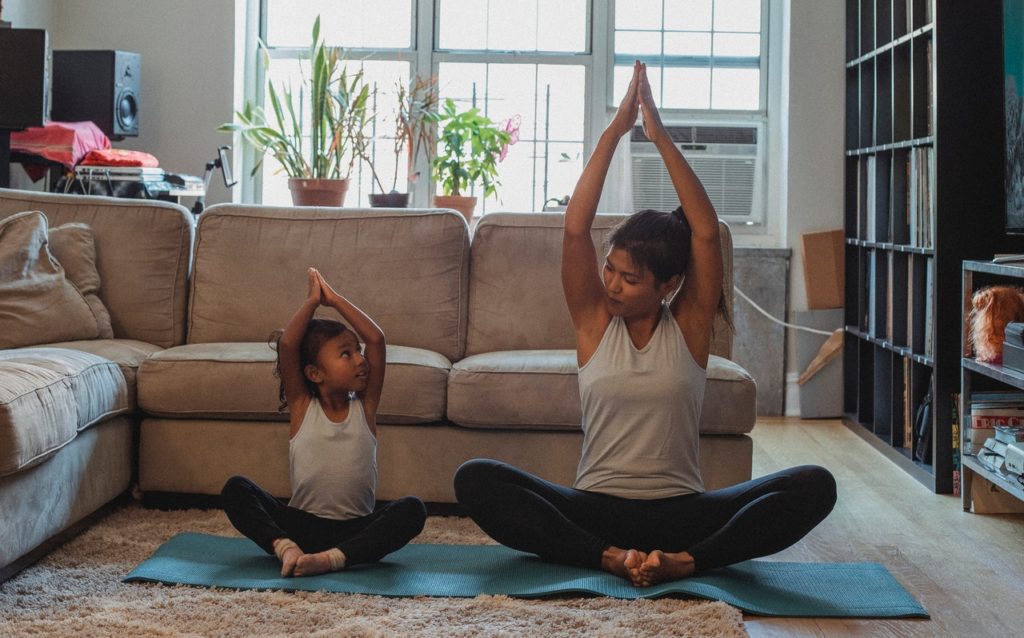General Information
Getting Ready for Bed: 10 Tips for Parents to Find the Best Bedtime Routine

Have you seen that movie with Adam Sandler where he has a magic remote that allows him to control life?
He can speed up, pause, even skip chapters of his life with the touch of a button. If you’re a parent of a child with a sensory processing disorder, I bet you wish you could fast forward through getting ready for bed every single night.
I know what it’s like – just the thought of the bedtime battle with your child is probably making you groan. Sure, the best bedtime routine can be a nightmare for any parent, but parents of children with ADH or ASD (autism spectrum disorder) have an especially difficult task to face each evening.
We are here to help end the battle of difficult bedtimes.
We’ll take you through 10 calming tips for sleeping, using our work with children with ADHD or ASD (Autism Spectrum Disorder), doctors, and most importantly – parents like you! And keep in mind that these tips are useful for all children, not just those with sensory processing disorders.
First, consider why children with sensory processing disorders struggle with falling asleep at bedtime.
Sure, most kids struggle to give up playtime, but your child also deals with two biological components that dampen his mechanism for falling asleep. First, falling asleep is three times harder for children with ADHD than children without.
That’s because the alertness part of the brain affected by ADHD , the hypothalamus, also controls the switch from awake to falling asleep. And second, if your child is taking prescribed stimulant medications like Ritalin, you’re fighting side effects of the medication itself.
In one study, for example, falling asleep took significantly longer with children taking stimulant-based medication for ADHD than children not taking medications. It’s common for these children to take a full hour or more in bed before actually falling asleep!
Alright, parents, so how should you put this info into action?
Here are 10 great tips for a more peaceful children’s bedtime routine.
1. Kids with sensory processing disorders or ASD need a routine. Setting up a clear and strict bedtime routine is paramount. For example, Bill has twin 13 year old boys, and he says, “With my boys, if we don’t use a strict bedtime routine, they are hell to deal with the next morning.”
Most of the parents we spoke to use a routine like this:
6:00/6:30pm: Dinnertime (No Caffeine And Low-Sugar!)
7:30pm Phase 1: Evening Movement Activities (Family Walk, Yoga, Simple Crafts, Bathtime)
8:00pm Phase 2: Quiet, Still Activities (Reading, Massage, Audiobook Or Meditation)
8:30/9:00 Phase 3: Into Bed, Lights Out (30 Minutes Of Quiet Music For Sleeping)
One more note about scheduling – experiment with moving bedtime forward 30 minutes. Studies have shown repeatedly that even a seemingly-short 30 minutes added to a child’s sleep can significantly help with staying asleep and their behavior the following day.
Maria found that even though her friends’ kids had 9 or 9:30 bedtimes, 8:30 is best for her son with ADHD. “If he’s not in bed by 8:30, it’s World War III the next morning.”
2. Give Yourself A Short Break, or Tag Team Parent. You’re exhausted after a long day. You know you must handle your children’s bedtime routine calmly and peacefully if you want your child to have any chance at being calm or peaceful.
But you can’t pour from an empty cup, so take a moment to decompress from work or family. If there are two of you, take 30-minute tag team sessions of parenting while the other clocks out with a cup of tea or a bath.
If you’re solo, start practicing a 30 minute break by asking your child to do one of his evening movement activities alone or with siblings while you sit in the next room with a cup of tea.
3. Use Visuals like Charts & Clocks. Using an evening routine chart makes it perfectly clear to your child what is expected. Additionally, Dee Dee told us, “We use a 30 minute warning and a 10 minute warning with our timer to let our son know that lights out is coming.”
4. Dim the Lights, Lower the Volumes, and Turn Off The Screens. Reducing sensory stimulation like light and noise around the house an hour before bedtime phases children from energetic daytime activities to relaxing nighttime activities and then into falling asleep.
5. Do 15 Minutes of Yoga. Research supports that 8-13 year old boys with ADHD doing yoga as part of their bedtime routine even just once a week were better at staying asleep and were less hyperactive in general. It’ll make YOU feel better too!

6. Give Your Child A 10 Minute Massage. One of our favorite calming tips for sleeping! “Our bedtime routine includes a massage to give him appropriate sensory input,” explains mother Melissa.
Try Story Massage – a kit for parents looking for specific massage instructions and bedtime stories that incorporate massage. Relaxing sensory input like this will help with falling asleep more quickly.
7. Check in With Your Child About Possible Underlying Anxieties. Talk about your child’s day. If she prefers, create a reflections jar where your child writes down “Things That Made Me Happy Today”, “Things That Made Me Scared Today” etc. and puts them in the jar to get them out of her head before bedtime.
8. Transition from lights out to sleep with light audio. Try white noise, music for sleeping, nature sounds, Rhythmic Entrainment Intervention CDs, or the Dream Pad. Some kids enjoy listening to varying nature sounds and letting their imagination wander while falling asleep. Alternatively, Rhythmic Entrainment Intervention (REI) music for sleeping CDs are based on relaxation research for staying asleep.
Lastly, the Dream Pad is a pillow with an integrated audio and vibration system that some kids love. Let us know which works best for your child for falling asleep and staying asleep.
9. Use a Weighted Blanket. We often recommend weighted blankets, especially for a child who has problems with the sensation of touch. For some parents, these can be a quick and surprisingly-effective aid to falling asleep and staying asleep.
10. Talk to Your Pediatrician about Melatonin Supplements. We as occupational therapists cannot prescribe it, but we have enough clients who rave about the positive changes in their child’s bedtime habits after adding melatonin that we would be remiss to leave it off our list. Tania says, “My 5 year old treated his 7:30 bedtime as a joke.
Even if he was in bed, he wouldn’t fall asleep sometimes until midnight. Our doctor told me about melatonin, and now bedtime is great!”
Studies show that using melatonin can reduce the time for falling asleep for kids with ADHD or ASD by HALF. Talk to your doctor about whether it’s a good option for your child, dosage, and potential side effects.
So, now it’s time to make your own bedtime routine.
Are there any tips on our list you haven’t tried yet? Pick one now that you’re going to implement this week. Make a short list of three more calming tips for sleeping to try in the next month.
And don’t forget, Mom & Dad, after the kids have gone to bed, you can use some of these better sleep techniques for yourself too!
Be sure to let us know how things pan out at your house by commenting below! We are constantly seeking input and advice from parents just like you! Take a deep breath, Mom & Dad. You can do this!